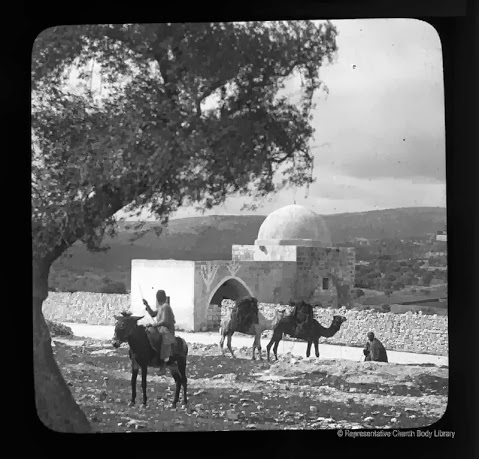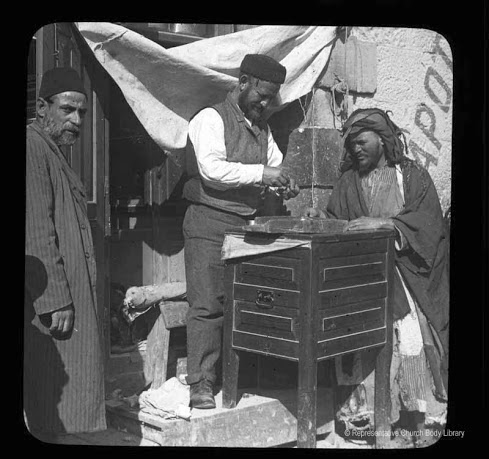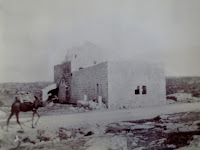Israel's History - a Picture a Day (Beta) |
|
Posted: 16 Jun 2014
Proving that responsible archivists and librarians digitize and preserve their photographic treasures is the collection of 19th century pictures of the Holy Land in the Presbyterian Research Centre in New Zealand. We present here a sample of the collection.
We thank Donald Cochrane, the former curator of the photographs and lantern slides, Myke Tymons the current curator, and Eva Garbutt, archivist at Knox who gave us permission to use their photographs. The Research Centre's introduction provides some details on the collection: The Presbyterian Church Archives Research Centre holds a fascinating collection of 144 glass Lantern slides of various scenes from the Holy Land. The majority appear to have been taken in the latter years of the 19th century. While undated, some do carry a manufacturers name or trademark which can act as a guide to dating.
Those high quality slides produced by the Aberdeen firm of George Washington Wilson (marked "GWW"), were produced throughout the late 19th century. Mr Wilson, who died in 1893, received patronage from Queen Victoria and a Royal Warrant due to his obvious abilities. Many slide sets are also numbered which show a considerable number missing...
The New Zealand collection is remarkable for the
Some of these photographs/slides were taken by Frank Mason Good in the 1860s. Color film was not available until years later. The color slides were transparencies with color applied.
In the 1880s, before movies or electricity, photographic slides such as these were projected in front of classes or audiences using a kerosene-lit lamp fitted with special lenses. The slides were often produced by optical manufacturers who sold the lanterns.
View our other lantern slide collections from Chatham University, the Church of Ireland, the Library of Congress, Oregon State University, and the George Eastman collection. With special thanks to David Bardin |


























